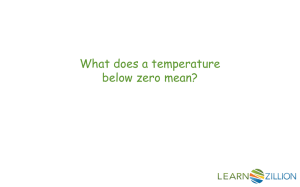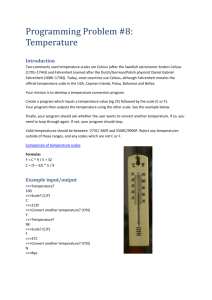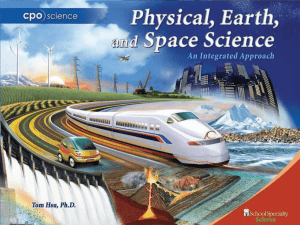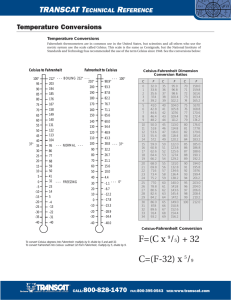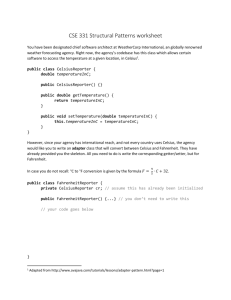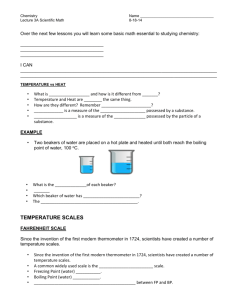Lesson 0: Introduction to Weather
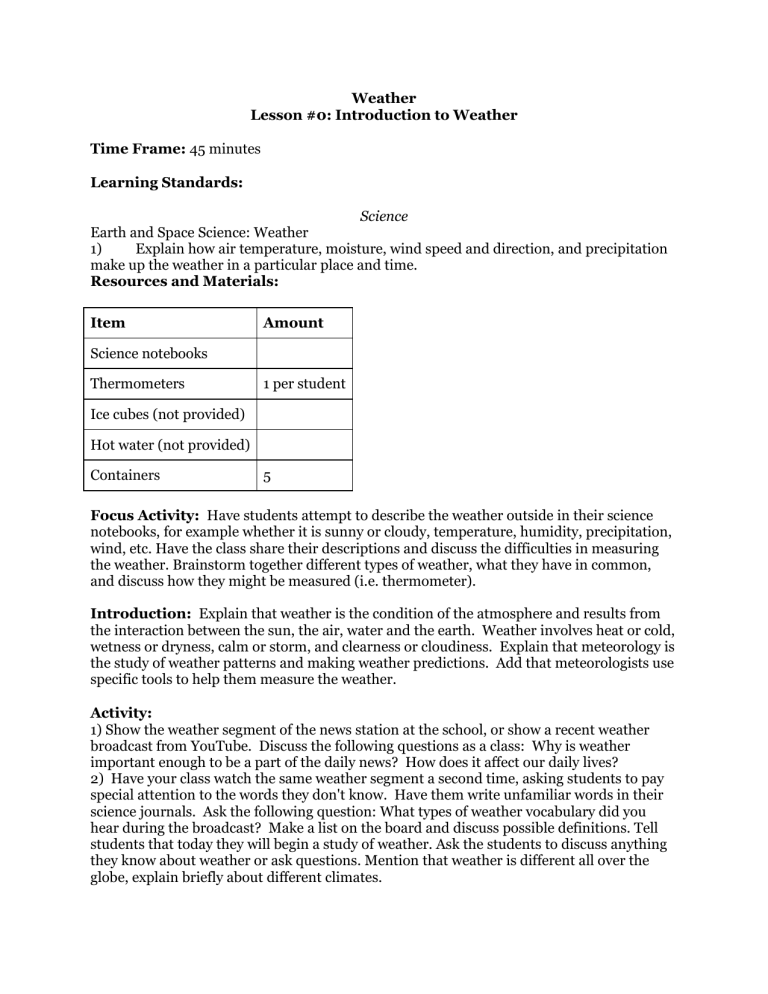
Time Frame: 45 minutes
Learning Standards:
Weather
Lesson #0: Introduction to Weather
Science
Earth and Space Science: Weather
1) Explain how air temperature, moisture, wind speed and direction, and precipitation make up the weather in a particular place and time.
Resources and Materials:
Item Amount
Science notebooks
Thermometers 1 per student
Ice cubes (not provided)
Hot water (not provided)
Containers 5
Focus Activity: Have students attempt to describe the weather outside in their science notebooks, for example whether it is sunny or cloudy, temperature, humidity, precipitation, wind, etc. Have the class share their descriptions and discuss the difficulties in measuring the weather. Brainstorm together different types of weather, what they have in common, and discuss how they might be measured (i.e. thermometer).
Introduction: Explain that weather is the condition of the atmosphere and results from the interaction between the sun, the air, water and the earth. Weather involves heat or cold, wetness or dryness, calm or storm, and clearness or cloudiness. Explain that meteorology is the study of weather patterns and making weather predictions. Add that meteorologists use specific tools to help them measure the weather.
Activity:
1) Show the weather segment of the news station at the school, or show a recent weather broadcast from YouTube. Discuss the following questions as a class: Why is weather important enough to be a part of the daily news? How does it affect our daily lives?
2) Have your class watch the same weather segment a second time, asking students to pay special attention to the words they don't know. Have them write unfamiliar words in their science journals. Ask the following question: What types of weather vocabulary did you hear during the broadcast? Make a list on the board and discuss possible definitions. Tell students that today they will begin a study of weather. Ask the students to discuss anything they know about weather or ask questions. Mention that weather is different all over the globe, explain briefly about different climates.
3) Pass out thermometers to each student. Explain how to read a thermometer, and the difference between Fahrenheit and Celsius. Many countries measure in Celsius, but in the
United States, we measure in Fahrenheit. They are just two different ways to measure the same thing.
4) Have students record room temperature in both Fahrenheit and Celsius. Pass out containers of water to each table with ice water and hot water, and allow students to measure the temperatures, recording them in their notebooks with both Celsius and
Fahrenheit. As a class, compile a chart on the board with the different temperatures.
5) If time allows, students may go outside or to different places in the school to measure temperatures and record the data in their notebooks.
Closure: Discuss the following questions with the class. Why is weather important in our daily lives? What are different aspects of weather that can be reported?
Assessment: Science notebook responses, participation in class activities and discussions
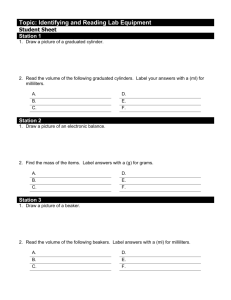

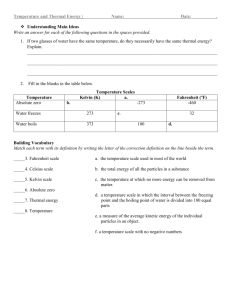
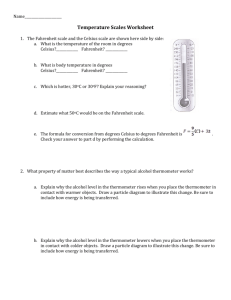
![Temperature Notes [9/22/2015]](http://s3.studylib.net/store/data/006907012_1-3fc2d93efdacd086a05519765259a482-300x300.png)
